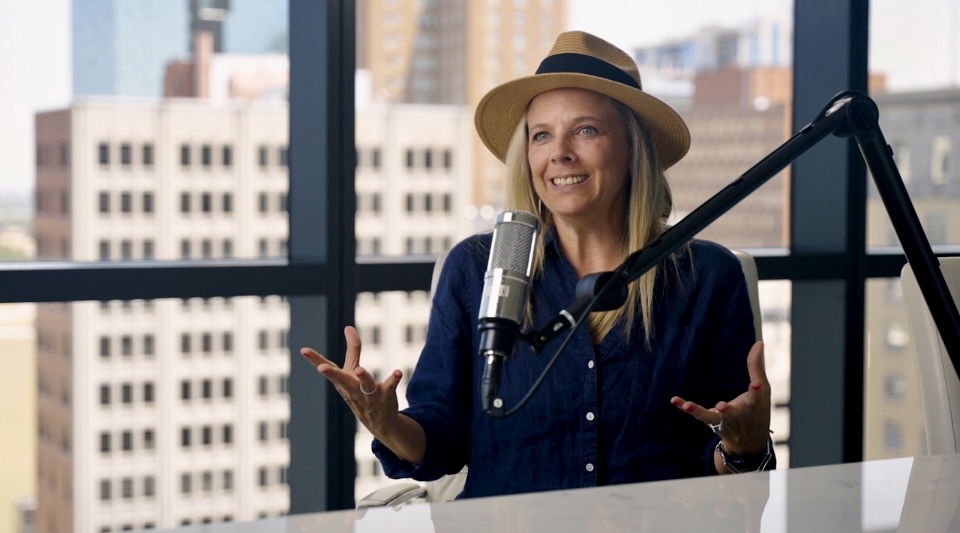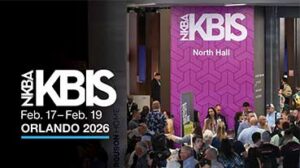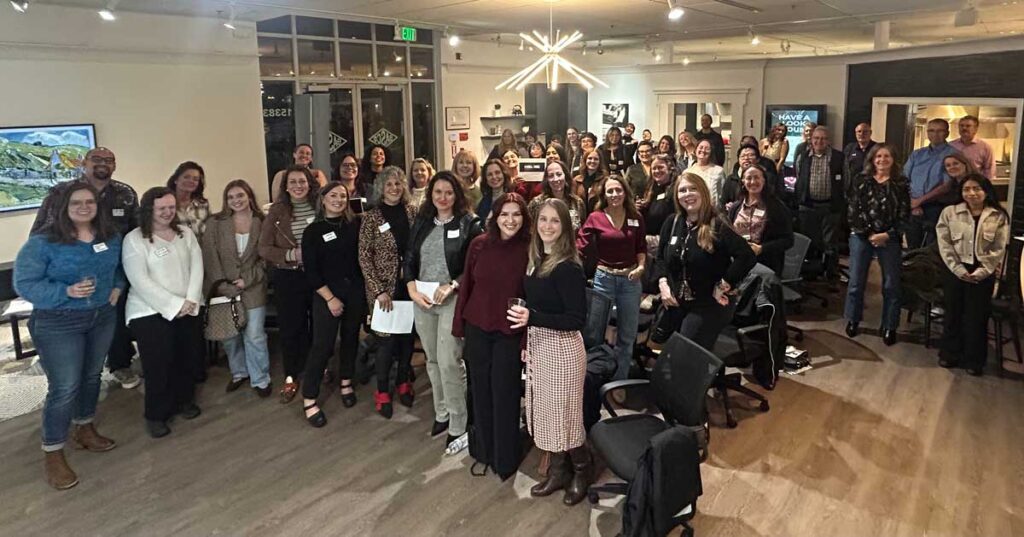
By Nicholas Tamarin
Stacy McCarthy, CMKBD, is a true visionary in the design world. The President of Stacy McCarthy Design, and the South Florida Chapter President for NKBA | KBIS, McCarthy is particularly passionate about trauma-informed design and helping families navigate life’s toughest transitions.
Her expertise spans luxury residential remodels to disaster restoration, and McCarthy is a highly sought-after speaker for the NKBA’s Chapter Presentation Program, where she offers the following topics: “Design Competition Ready: Best Practices for Design Competition Confidence,” “Lead the Way: How Chapter Leadership Fuels Designer Income,” “Emergency Design: Guiding Clients After Fire, Flood and Life’s Chaos,” and “Fearless Kitchens: Bold Design with Practical Function.”
With dual degrees in architectural drafting and art history, she brings over 25 years of experience across showrooms, multi-family housing, and national brand consulting. Formerly from California and now based in South Florida, McCarthy is also a CEU author, mother of five, passionate runner, and art lover. We asked her how she gets it all done.
Could you tell us about your career background?
I’ve spent more than 25 years immersed in the world of design and architecture, spanning everything from luxury residential remodels, multi-family project management, institutional buildings, and restaurants to showroom design, national brand consulting, and disaster restoration. I launched my firm, Stacy McCarthy Design, in 2002, to focus on conceptual planning, and have more recently directed my design towards trauma-informed renovation services for homeowners and professionals across the country. My career path has been anything but linear, but each step has been rooted in creating spaces that truly serve people, especially those navigating major life changes after disaster through Emergency Designer.
Today, I split my time between private clients, mentoring other designers, and contributing to industry leadership through roles like my current position as NKBA South Florida Chapter President, and many speaking engagements.
How about educationally?
Since I always knew I would follow my dream in architecture, I had a great opportunity to take four years of high school architectural drafting at Roseville High School in California, where I lived most of my life. I earned dual associate degrees in Architectural Drafting and Art History, which gave me a solid foundation in both the technical and cultural aspects of design.
I interned for several architects, whose blend of structure and storytelling still influences my approach today. Every detail matters, and every room has a narrative. I’m also a Certified Master Kitchen & Bath Designer, Certified Interior Designer, CEU author, accredited CEU provider, and former certified mold remediator. I modeled my belief in lifelong learning for my kids, who are always stalking me—haha—which has resulted in evolving my career and expanding my knowledge, especially in areas that intersect design with wellness, construction, and emotional recovery.
How did you get into kitchen and bath design specifically?
Design found me early. I think very spatially, and I was fortunate that my parents admired my eagerness to draw floor plans at the age of 4. This was when I was instructed to draw a house, even though the teacher really meant a box, triangle, door, and window. My family also traveled a lot, and my dad showed me how to read maps around the time I began to read. I rearranged rooms (sorry, mom) and sketched homes for fun, but it wasn’t until I began working for architectural firms that I realized how much I was drawn to human-scaled spaces.
The last architect I worked for wanted to “jump on” the kitchen and bath trend, which I was very hesitant to do. The firm became an active member of NKBA, and then one of our cabinet reps, Jim Gurulè, from the Northern California Chapter, encouraged me to apply for my CKD. My experience in disaster restoration deepened that focus, as I saw firsthand how rebuilding a kitchen or bath after a traumatic event is more than just restoring a home; it can be a critical step in someone’s healing journey. That intersection of emotional support and strategic design continues to drive my work today.
Why did you get into the NKBA, and how has it benefited your career?
I joined the NKBA in 1996 through the aforementioned architectural firm. As I started attending events and meetings, I began looking for deeper connections in the kitchen and bath world… and I found so much more. The education, the camaraderie, and the leadership opportunities truly shaped my career. I soon became a member, on my own, for my design firm.
Since then, I’ve served in nearly every chapter role and currently have the honor of leading the South Florida Chapter as President. Some of my best friends and fondest memories are associated with NKBA. NKBA has not only helped me grow as a dedicated professional but also allowed me to give back through mentoring, CEU development, and regional and national judging. It’s a community that celebrates both innovation and integrity, and I’m grateful to be part of it.
What’s next for you, and what do you see as next for the industry?
I’m passionate about continuing to elevate the conversation around trauma-informed design and helping families reimagine their homes after difficult transitions. I also see the kitchen and bath industry increasingly embracing more holistic solutions, ones that integrate emotional well-being, accessibility, and environmental responsibility. I joke around about being at the highest level with CMKBD and nowhere to go, but in reality, I am only beginning my next vision.
Personally, I’m expanding my presence at national events like High Point Market, WestEdge, DesignEdge, and other events where I’ve recently been invited to participate in conversations that bridge interior design, product development, and client advocacy after tragedy. It’s an exciting time to be in this field, and I look forward to helping shape its future through purpose, service, and innovation.
To have Stacy speak at your chapter, please visit nkba.org/chapter-programs.






















